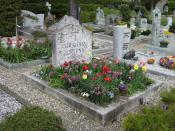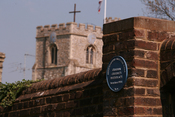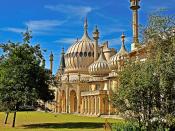11. In Greene's Brighton Rock, is Pinkie a realistic character corrupted by his environment, or is he a living symbol of what all men can be like if they allow themselves to be carried always by their impulses?
*
**
If history truly is a river that, by flowing, repeats itself, then an exciting turn of the tide is bound to change literature in the following years. Looking back from the dawn of the twenty-first century to a hundred years ago, the rise of modernism towers like a giant over the horizon of art. As writers wanted to explore different themes, or classic themes with a new approach, the novel broke from its traditional purpose as entertainment and emerged as an artistic, expressive vehicle of thought. For instance, Graham Greene - hailed, much to his own displeasure, as a Catholic writer - treated the themes of evil in relation with the church like no other had done before.
In Brighton Rock, Greene uses a particular setting, coupled with characters that are both realistic and symbolic, to protest against the religious dogmas of Catholic religion.
Many readers, upon reading Brighton Rock, note the strong rhythm and pacing of the action, which is Graham Greene's trademark and cinematic influence, and the rapidity at which we can understand the world the author is laying before us; some observe, with enough textual evidence and logical consequences to back their thoughts, that Brighton is an allegory for the whole world. Yet the setting's main quality that stands out is its two-sided face, opposing the lively, sunny vacation resort filled with candies and public games to the dark, unseen world of gangs at night, in the shadow of murders and razor blades. As such, the setting put forth by Graham Greene could...


